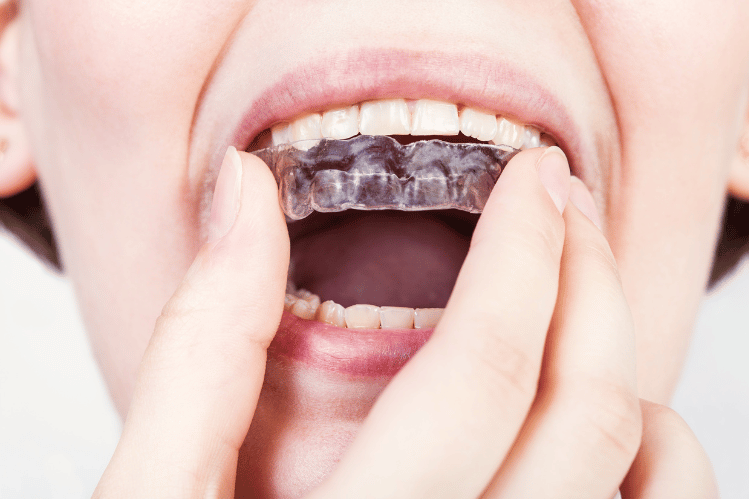
A radiant smile not only boosts confidence but also plays a significant role in maintaining optimal oral health. However, for many individuals, bite issues can hinder both aesthetic appeal and proper dental functionality. Traditional metal braces have been a longstanding solution, but the advent of invisible aligners has revolutionized the way we approach bite problem corrections. In this comprehensive guide, we'll delve into the world of invisible aligners and explore how they offer an effective and discreet approach to correcting bite issues.
Understanding Bite Issues: A Common Concern
Bite issues, such as overbites, underbites, and crossbites, can arise due to a variety of factors, including genetics, childhood habits, and jaw misalignments. These problems not only affect the aesthetics of a smile but can also lead to difficulties in chewing, speaking, and maintaining oral hygiene.
The Rise of Invisible Aligners: A Discreet Solution
Invisible aligners, a modern orthodontic innovation, have gained immense popularity due to their discreet nature and impressive results. Crafted from transparent medical-grade plastic, these custom-made aligners offer a clear advantage over traditional braces. They gradually shift teeth into their desired positions, effectively addressing bite problems with minimal visibility.
Benefits Galore: Why Choose Invisible Aligners?

1. Aesthetic Appeal: Unlike traditional braces, which are conspicuous and often draw unwanted attention, invisible aligners are virtually undetectable. This makes them an appealing choice for teenagers and adults alike.
2. Improved Comfort: Metal braces can cause discomfort and even irritation to the mouth's soft tissues. Invisible aligners have a smooth surface, reducing the likelihood of such irritation.
3. Removable Convenience: Unlike braces that are fixed on teeth, aligners can be removed while eating, brushing, and flossing. This feature promotes better oral hygiene and allows for a wider range of food choices.
4. Customized Treatment: Each set of aligners is tailor-made to suit the individual's unique dental structure. This personalized approach ensures a precise and effective treatment process.
5. Predictable Outcomes: Advanced digital technology allows patients to visualize the anticipated results before even beginning the treatment. This provides a clear understanding of the journey toward a corrected bite.
The Treatment Journey: Step by Step
1. Consultation: The process begins with a consultation where a qualified orthodontist evaluates the patient's dental condition and bite issues. A treatment plan is then developed using 3D scans and images.
2. Custom Aligners: A series of custom aligners are designed to gradually move the teeth into their ideal positions. Each set is worn for about two weeks before progressing to the next.
3. Regular Check-ups: Periodic appointments with the orthodontist are essential to monitor progress and make any necessary adjustments to the treatment plan.
4. Retention Phase: Once the bite issues are corrected, a retainer is often provided to maintain the newly achieved alignment. This phase is crucial to prevent any regression.
Embracing a Confident Smile and Proper Bite Alignment
Invisible aligners are not just about achieving a stunning smile; they also ensure proper bite alignment, which is crucial for overall oral health. By addressing bite issues, these aligners can enhance chewing efficiency, reduce the risk of dental problems, and boost self-esteem.
Conclusion
In conclusion, the journey to a confident smile and optimal bite alignment has been transformed by the advent of invisible aligners. Their discreet nature, coupled with remarkable benefits and customized treatment plans, has made them a preferred choice for individuals seeking a modern solution to bite issues. So, why wait?
Remember, your smile is not just a curve – it's a powerful expression of self-assurance and well-being.
FAQs
Invisible aligners are custom-made, transparent trays that gradually shift your teeth into the desired positions. They are designed using advanced 3D technology to correct bite issues discreetly and effectively.
Invisible aligners are suitable for individuals with various bite issues, such as overbites, underbites, and crossbites. A consultation with an orthodontist can determine if you're a good candidate based on your specific dental condition.
Unlike traditional braces, invisible aligners are nearly invisible, offering a more discreet orthodontic option. They are removable, allowing for easier oral hygiene and flexibility in eating. Traditional braces use metal brackets and wires to align teeth.
The treatment duration varies depending on the severity of the bite issue. On average, treatment with invisible aligners can take anywhere from several months to a couple of years. Your orthodontist will provide a personalized timeline during the consultation.
Invisible aligners are designed for comfort. While you may experience mild discomfort or pressure when transitioning to a new set of aligners, this is a sign that the aligners are working to move your teeth. This discomfort usually subsides within a few days.
It's recommended to remove your aligners while eating or drinking anything other than water. This prevents staining and damage to the aligners. Remember to brush and floss before putting your aligners back in to maintain good oral hygiene.


 Australia
Australia New Zealand
New Zealand Malaysia
Malaysia English
English Portuguese
Portuguese English
English English
English English
English English
English English
English Canada
Canada